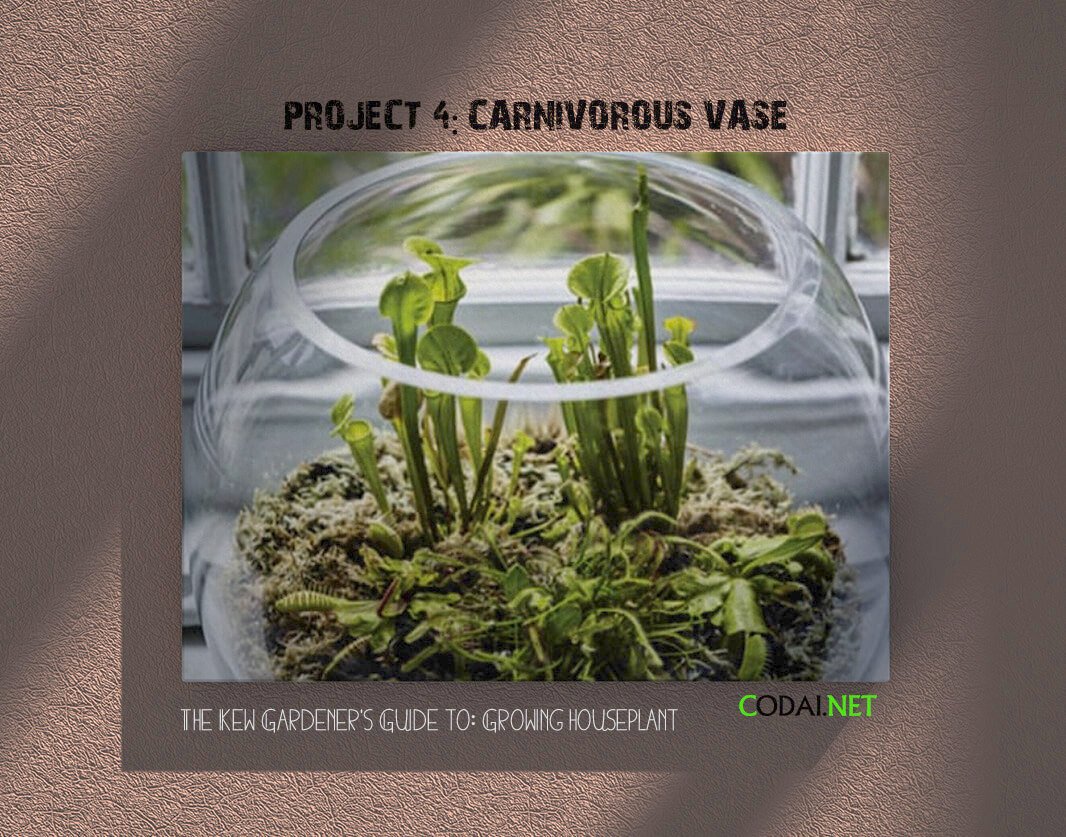Chi Dionaea - Chi Bắt Ruồi Venus, Chi Drosera - Chi Gọng Vó, Chi Sarracenia, Ebook The Kew Gardener's Guide to: Growing houseplant - Kay Maguire
[Ebook Việt Hoá] The Kew Gardener’s Guide to: Growing houseplant: PROJECT 4: CARNIVOROUS VASE
- Nguồn: Ebook The Kew Gardener’s Guide to: Growing houseplant – Kay Maguire
- Biên tập: Dũng Cá Xinh
- Dịch: Happy Nguyen
English
Carnivorous vase
Carnivorous plants are an intriguing group that are much easier to look after than you might think. Most of them simply require boggy, slightly humid conditions and a sunny spot. They can be grown individually in a pot and saucer, but as most have similar cultural needs they can also be planted together to make a fascinating feature. Collections look good when grown in low troughs or shallow planters, but are also happy in large glass vessels such as this round, fishbowl-style vase.
Carnivorous plants are fussy about soil and demand moisture-retentive, ericaceous soil so use a specialist carnivorous compost mix or make your own peat-free potting mix (see here). Such plants need to be kept constantly moist from spring to autumn, so line and topdress your container with moss to help to retain water and give plants the boggy conditions they love. Carnivorous plants are also very sensitive to water type. The minerals and salts in tap water, particularly hard water, will build up and eventually kill them so always collect and use rainwater to water them with. Carnivorous plants do not require feeding.
CARNIVOROUS PLANTS FOR A VASE
- Cape sundew (Drosera capensis)
- North American pitcher plant (Sarracenia flava)
- Venus fly trap (Dionaea muscipula)
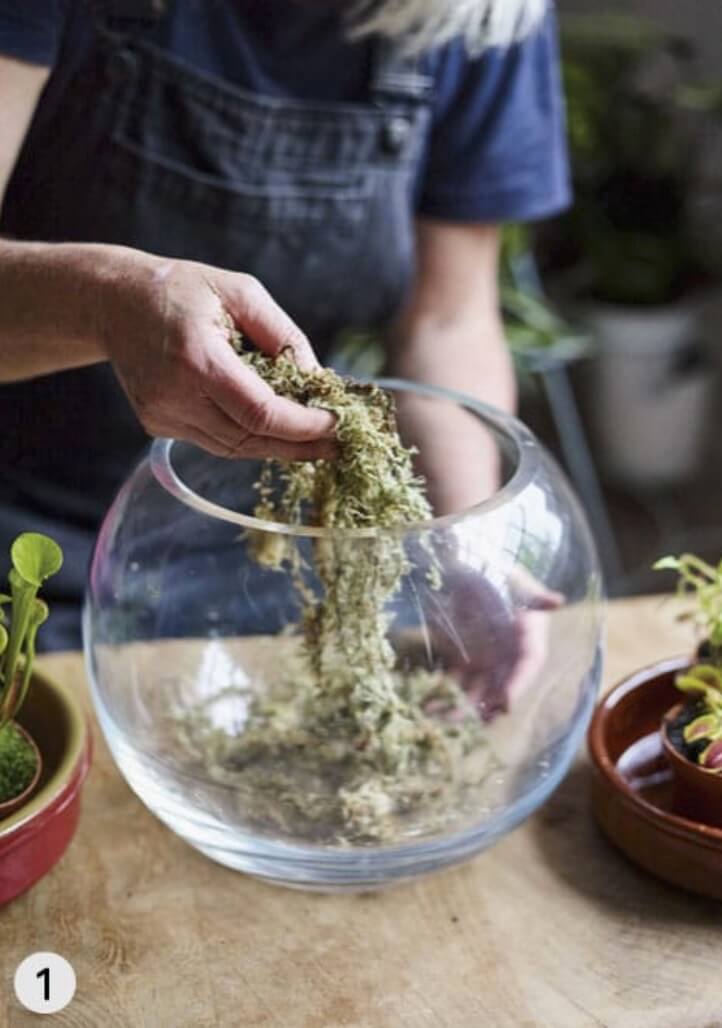
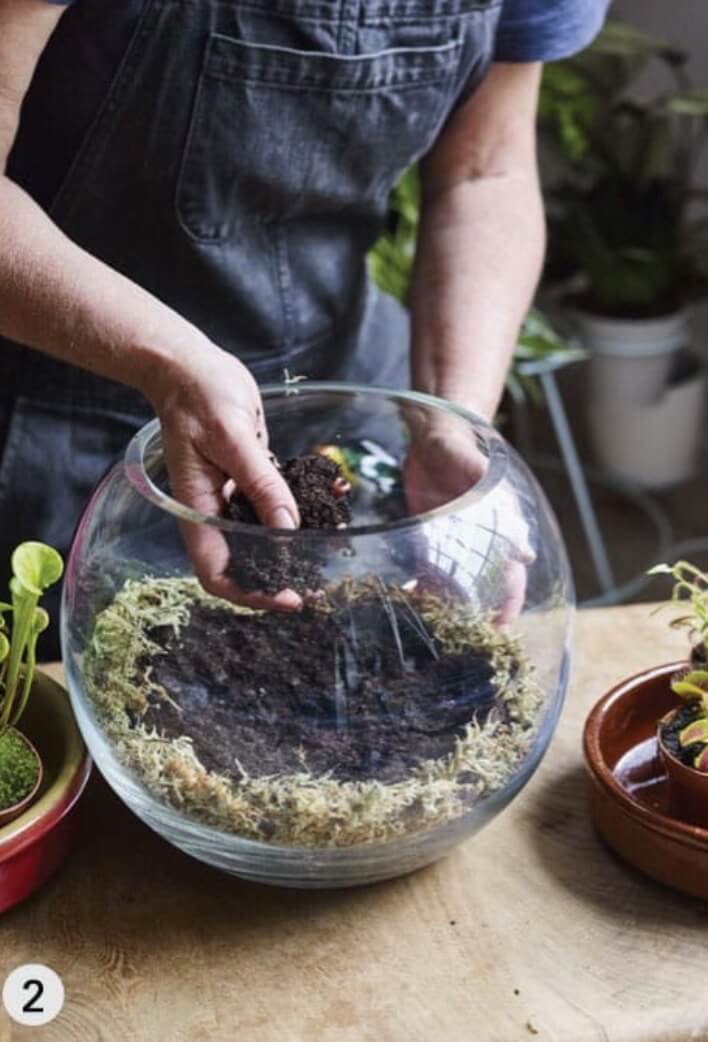
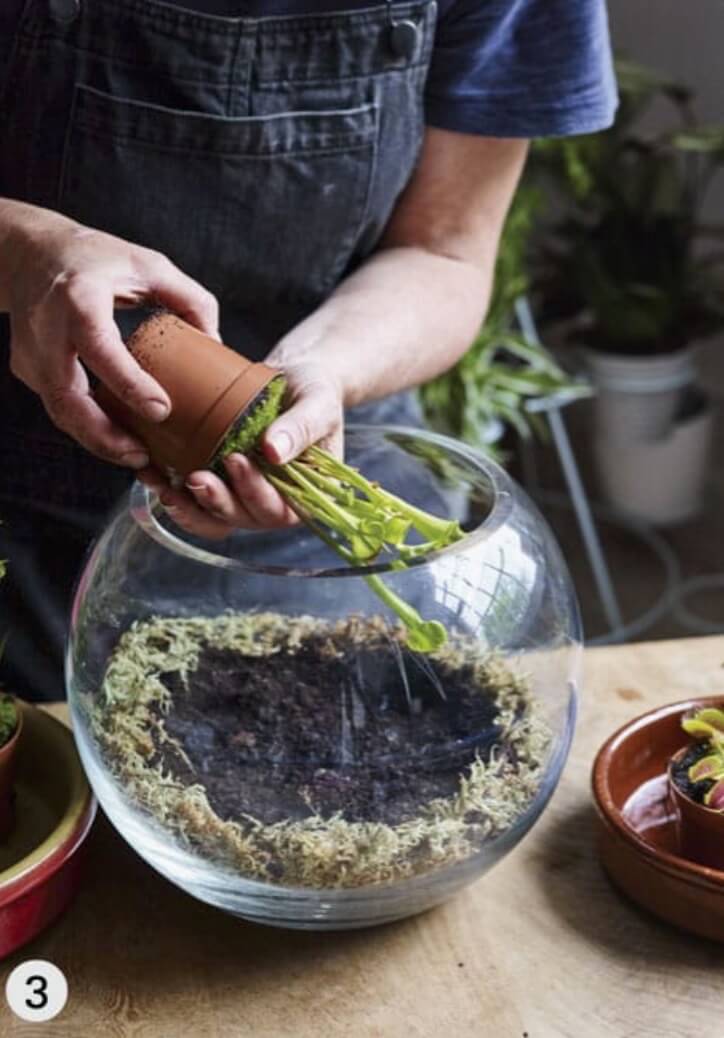
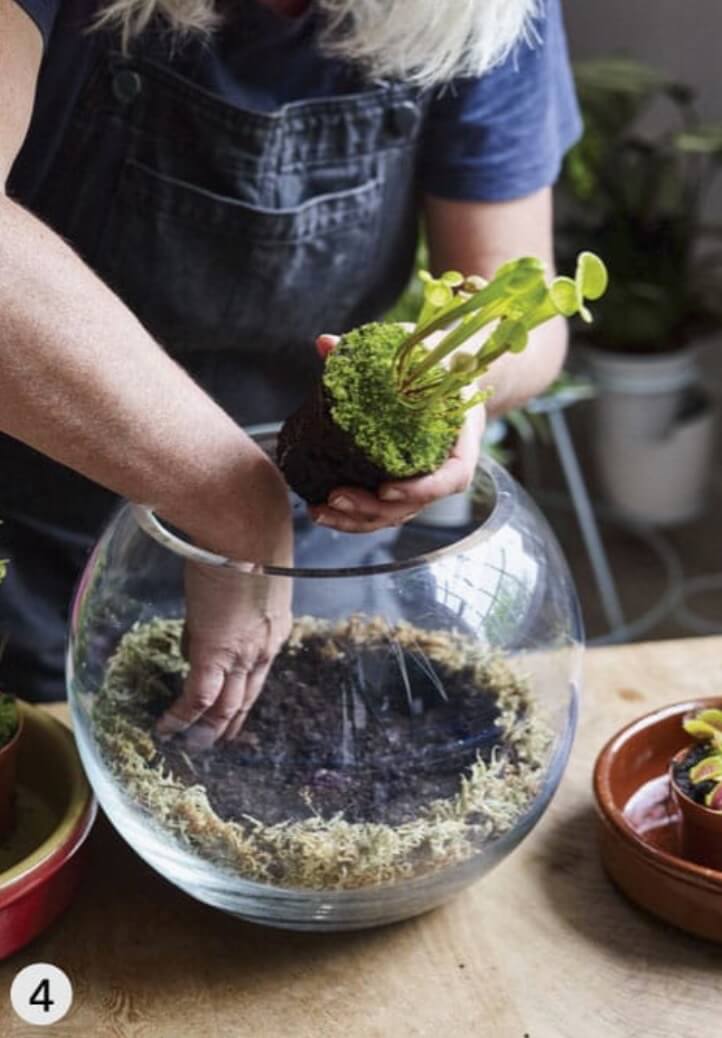
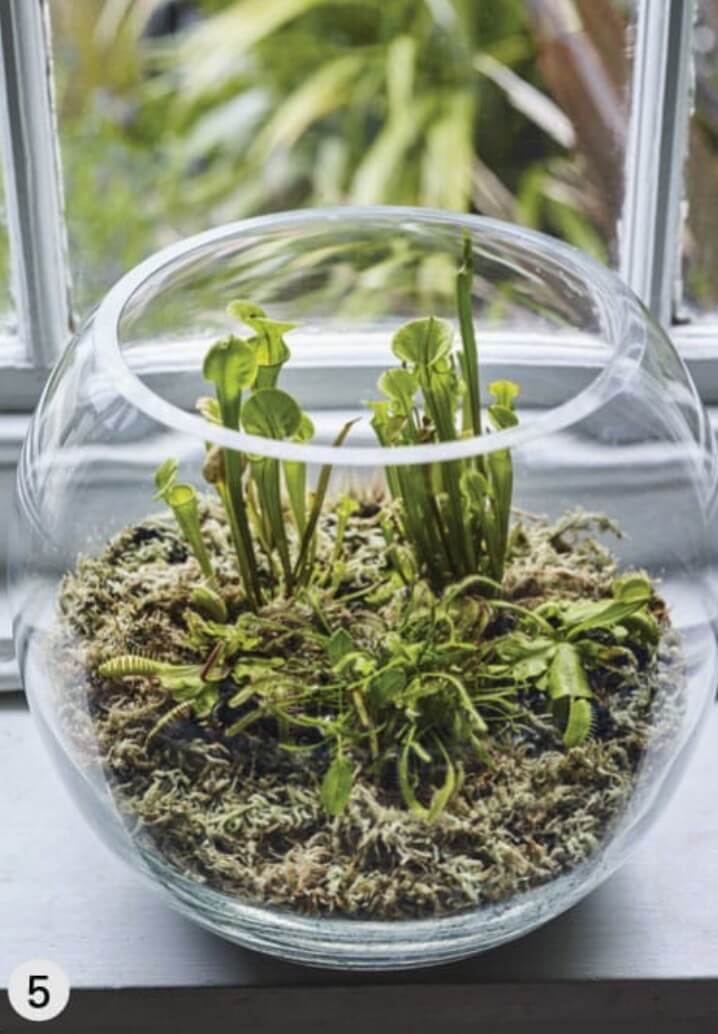
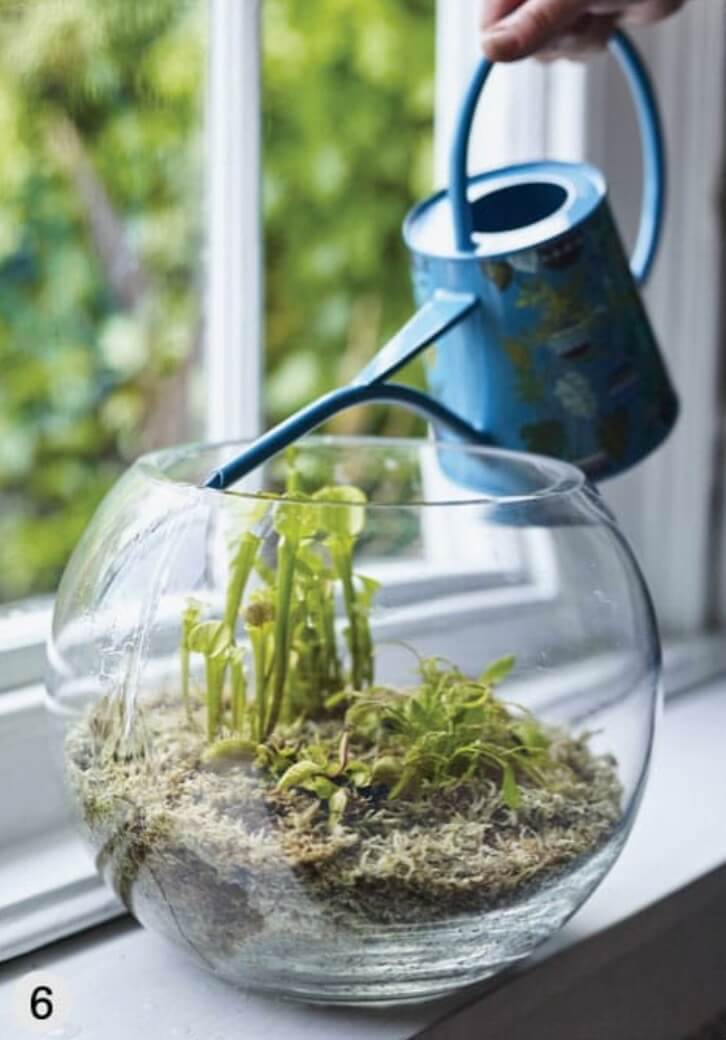
Tiếng Việt
Chặng 4: Loài cây ăn thịt
Cây ăn thịt là một nhóm cây thú vị và dễ chăm sóc hơn bạn tưởng. Hầu hết chúng chỉ yêu cầu đất tơi xốp, không khí ẩm ướt và một nơi tràn đầy ánh nắng. Chúng có thể được trồng riêng trong chậu và khay trồng, nhưng chúng cũng có thể được trồng cùng nhau để tạo nên khu sinh thái nhỏ hấp dẫn. Bộ sưu tập cây ăn thịt sẽ lôi cuốn người thưởng cây khi được trồng trong bệ cây có thành thấp hoặc trong chậu trồng nông, nhưng đó cũng là sự kết hợp rất hài hòa khi chúng được trồng trong các bình thủy tinh lớn như bình tròn kiểu chậu cá này.
Cây ăn thịt rất kén đất. Chúng yêu cầu đất ẩm và đất chua, vì vậy hãy sử dụng hỗn hợp phân trộn chuyên dụng cho cây ăn thịt hoặc tự làm hỗn hợp phân trộn không có than bùn (xem tại đây). Những cây như vậy cần được giữ ẩm liên tục từ mùa xuân đến mùa thu. Hãy lót và phủ lớp rêu lên thùng chứa của bạn để giúp giữ nước và mang lại cho cây những điều kiện mà chúng yêu thích. Cây ăn thịt cũng rất nhạy cảm với loại nước. Các khoáng chất và muối trong nước máy sẽ tích tụ lại và cuối cùng giết chết chúng. Vì vậy hãy luôn tích trữ và sử dụng nước mưa để tưới chúng. Cây ăn thịt không cần bón phân.
Những loại cây ăn thịt thường được trồng trong chậu
- Cây Gọng Vó (Drosera capensis)
- Cây Hố Bẫy (Sarracenia flava)
- Cây Bắt Ruồi (Cây Bẫy Kẹp, Dionaea muscipula)






